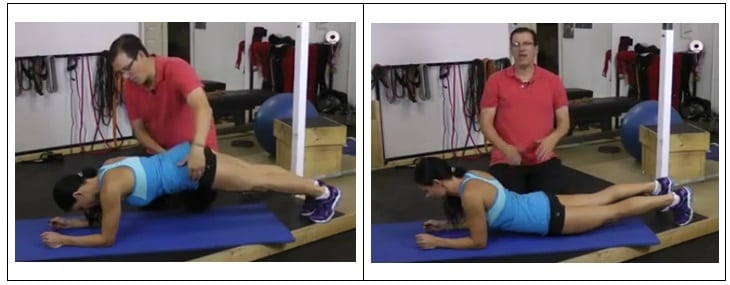
A planking exercise is one in which you are on your forearms, with your legs straight and your toes pointed to the sky.
When you think of a challenging pose, the last thing that comes to mind is planking. But it’s not as easy as it looks. Planking is a great way to strengthen your core and build stamina. However, this exercise comes with its own set of risks and potential back pain triggers. If you have been practicing planking regularly and not seeing any benefits, there’s something wrong. If you are still trying to figure out if planking has triggered your back pain or not, take note of these points first.
What is Planking?
Planking is a great way to build core strength, but it can also help improve your posture and balance. Planking is a form of yoga that requires you to extend your body on the floor, face down, with your arms straight, your palms on the floor, and your feet, toes pointed. You can hold it for as little as 30 seconds or as long as a few minutes. While there are many variations of planking poses, they all work on the same principle and strengthen the core.
Planking Is Not Always Safe Or Effective
When you plank, you are bending your body in half, which is a position that most people don’t hold regularly. Keeping these positions becomes a regular practice. It can put undue stress on your muscles and joints. And if you already have a pre-existing condition or injury in your back, then the pressure on your body will only worsen your back pain. It is best to avoid planking if you have a back injury. If you have a pre-existing condition, it is best to consult a specialist before you start the plank routine. A specialist can tell you if you have a condition worsened by this exercise and what alternatives you can do instead.
Why Does Planking Cause Back Pain?
The most common reason why planking causes back pain is poor form. Planking requires you to engage your core muscles and keep them contracted for a long time. If you don’t use the proper form, you’re more likely to strain your lower back, neck, or shoulders. The position you hold while you plank is not one that most people are used to. When your body is in an unusual position, it is more likely to be injured.
I wanted to explain how the plank exercise is the reason why you have back pain and give out some tweaks that you can do to turn the plank into good training from a back pain-creating exercise.
I wanted to explain how the plank exercise is the reason why you have back pain and give out some tweaks that you can do to turn the plank into a good workout from a back pain-creating exercise.
CLICK HERE to watch the video on YouTube
1. Two Common Plank Mistakes
Orsy is going to demonstrate a poor plank.
Bad Plank Positions
The two most common mistakes are that the seat is too high or the hips are dropped too low.
The worst part about these two mistakes is the change in the back curve.
Maintaining that curve in the back and activating the abdominal area and the muscles around it to keep the spine neutral is what we want to do.
2. How to Fix the Plank Exercise
I get people to start from their knees when it comes to the plank. I get their pelvises and backs into a good position in that kneeling position, then move them into the full plank.
Good Plank Position
How to do the exercise fix:
- Orsy is in a plank position from the knees.
- She rocks her pelvis forward, rocking it back, and then finds what’s neutral for her.
- She tightens the abdominal area like she is bracing for a punch.
- She lifts her knees off the floor. Now she is in good alignment.
- Then she can engage her glutes Maximus and her lats to protect that spine even more.
How long can I get people to hold the position?
Usually, I begin with five seconds, hold for five repetitions, then I can increase it to ten seconds and ten repetitions.
Try this variation if you feel an unusual sensation in your back while doing planks. Start from your knees, position your pelvis properly, engage your abdominal muscles to lock the position, lift your knees off the ground, and pull in your glutes and lats.
It is essential to know that there is a chance that it can cause back pain. If you have been planking regularly and feel pain in your back, then the pain might be caused by your planking. The best way to figure out what is causing the pain is to track your activity and pain levels. If you feel your planking routine causes your pain, it is best to cut down on your planking. You can replace your plank routine with other exercises less likely to cause back pain. If you want to strengthen your core but don’t want to risk pain in your back, other activities are less likely to cause back pain.
If you do have back pain and are looking for a program to help you overcome it, check out Low Back Pain Solved
Rick Kaselj, MS



